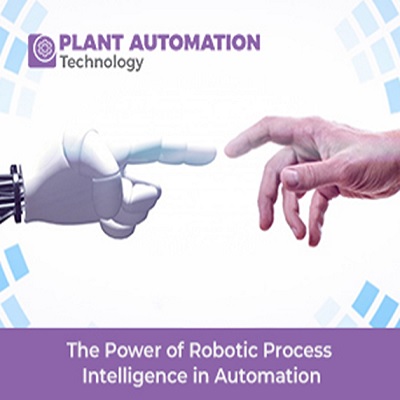The Power of Robotic Process Intelligence in Automation

Introduction
In the age of digital transformation, businesses constantly search for ways to streamline their operations and improve efficiency. Robotic Process Automation (RPA) has emerged as a valuable tool in this endeavor, enabling organizations to automate repetitive tasks and optimize processes. However, with technological advancement, there is an increasing demand for intelligent automation solutions that surpass basic rule-based automation. This is where Robotic Process Intelligence (RPI) comes into play, leveraging artificial intelligence and machine learning to enhance traditional RPA capabilities. In this article, we explore RPI's transformative potential and its influence on automation.
Understanding Robotic Process Intelligence
Robotic Process Intelligence (RPI) is the convergence of artificial intelligence and machine learning in RPA systems, enabling them to learn, adapt, and make intelligent decisions. Unlike traditional RPA, which operates on predefined rules, RPI empowers software robots to analyze and interpret data, recognize patterns, and make data-driven choices. By leveraging cognitive capabilities, RPI enhances automation systems to handle unstructured data, perform intricate tasks, and even engage in natural language processing.
Enhancing Automation Capabilities
Robotic Process Intelligence incorporation into automation brings many benefits. One of the key advantages is the ability to handle unstructured data. Traditional RPA limits structured data formats, such as spreadsheets or databases. RPI, on the other hand, can process and extract valuable insights from unstructured data sources like emails, documents, and images. This allows organizations to automate processes that involve analyzing free-text information, such as customer feedback or invoices, significantly reducing manual effort and improving accuracy.
| Know more about: Unleashing Zero-Defect Manufacturing through Hyperautomation |
Moreover, RPI enables automation systems to develop and adapt over time. By employing machine learning algorithms, RPI can identify patterns, predict outcomes, and continuously optimize processes. This self-learning capability enhances automation efficiency and effectiveness, as the system automatically adjusts its actions based on past experiences and evolving data. RPI can learn from historical data, which empowers it to handle complex scenarios and make informed decisions, even in dynamic environments.
Driving Insights and Decision-Making
Another significant aspect of Robotic Process Intelligence is its capacity to generate actionable insights and support decision-making. By analyzing large volumes of data, RPI can identify trends, anomalies, and correlations that might not be apparent to human operators. These insights can be invaluable in driving business decisions, identifying optimization opportunities, and mitigating risks. RPI can also perform predictive analytics, forecast outcomes, and provide proactive recommendations.
In addition, RPI extends above and beyond by incorporating natural language processing to understand and respond to human interactions. This breakthrough enables the seamless integration of chatbots, virtual assistants, and intelligent customer service applications. By integrating RPI into customer-facing operations, organizations can greatly improve the customer experience, provide personalized support, and ultimately elevate overall satisfaction levels.
RPI in Complex Decision-Making
Robotic Process Intelligence is particularly valuable in complex decision-making scenarios. Traditional RPA systems follow predefined rules and instructions, making them suitable for repetitive and rule-based tasks. However, when faced with intricate situations that require judgment and analysis, RPA alone may fall short. RPI fills this gap by enabling automation systems to evaluate multiple variables, weigh different factors, and perform intelligent decisions based on predefined criteria.
As an example, in the finance sector, RPI can be leveraged to evaluate loan applications. Through the analysis of an applicant's financial history, credit score, and pertinent data, RPI can assess the probability of approval. Additionally, RPI can incorporate real-time market conditions and policy updates to make well-informed decisions. This enhances loan processing efficiency, guarantees consistency, and diminishes human errors.
| Also Read:When to Invest in Robotic Process Automation (RPA) for Manufacturing: A Guide to Key Indicators and Scenarios |
The Role of Machine Learning in RPI
Machine learning plays a crucial role in Robotic Process Intelligence. By leveraging machine learning algorithms, RPI systems can continuously learn and improve their performance. This is achieved through training on historical data, identifying patterns, and refining decision-making processes. As the system encounters updated data, it adapts and adjusts its models to make more accurate predictions and decisions.
One application of machine learning in RPI is anomaly detection. By training the system on normal patterns and behaviors, it can recognize deviations or anomalies in real time. For example, in cybersecurity, RPI can monitor network traffic and identify suspicious activities that may indicate a potential security breach. It can then trigger automated responses or notify human operators for further investigation. This proactive approach enhances cybersecurity defenses and reduces response time to mitigate risks.
| Also Read: The Power of Machine Learning in Robotic Intelligence |
RPI and Human Collaboration
Contrary to the misconception that automation threatens jobs, Robotic Process Intelligence can actually enhance collaboration between humans and machines. RPI systems are designed to augment human capabilities rather than replace them. By automating repetitive and mundane tasks, RPI frees up human workers to focus on higher-value activities that require creativity, critical thinking, and complex problem-solving.
Additionally, RPI can act as a virtual assistant, providing real-time support and guidance to human operators. It can offer suggestions, recommendations, and relevant information to help humans make informed decisions. This collaboration between RPI and humans fosters a symbiotic relationship, where each party contributes its unique strengths, leading to increased productivity and improved outcomes.
The Future of RPI
As technology advances, robotic process intelligence will grow. With the integration of natural language processing and sentiment analysis, RPI systems can understand and respond to human interactions more effectively. This opens up opportunities for chatbots, virtual assistants, and automated customer service applications that provide personalized and human-like experiences.
Furthermore, as data sources and connectivity expand, RPI can leverage the Internet of Things (IoT). By integrating with IoT devices, RPI systems can collect and analyze real-time data from sensors, machines, and other connected devices. This enables proactive decision-making and automation based on dynamic environmental conditions.
Challenges and Considerations
Robotic process intelligence offers immense potential. Organizations must address challenges when implementing this technology. One such challenge is data availability and quality. RPI relies on accurate and comprehensive data to make informed decisions. Therefore, organizations must ensure that data sources are reliable, properly structured, and accessible to automation systems. Data privacy and security are also critical considerations to protect sensitive information and comply with regulatory requirements.
Another challenge is RPI integration with existing systems and processes. Organizations may need to evaluate their infrastructure and ensure compatibility with RPI tools and platforms. Furthermore, RPI implementation may require changes to existing workflows and role redefinition. Organizations must invest in proper training and change management strategies to help employees adapt to the new automation landscape.
Conclusion
Robotic Process Intelligence represents a significant advancement in automation. By combining artificial intelligence, machine learning, and cognitive capabilities, RPI enhances automation systems' effectiveness, efficiency, and adaptability. It enables unstructured data handling, drives insights and decision-making, and supports customer interactions. However, organizations must carefully plan and execute RPI implementations, considering factors such as data availability, integration, and change management. With the right approach, Robotic Process Intelligence has the potential to revolutionize automation, unlocking new levels of efficiency and innovation in organizations across various industries.







